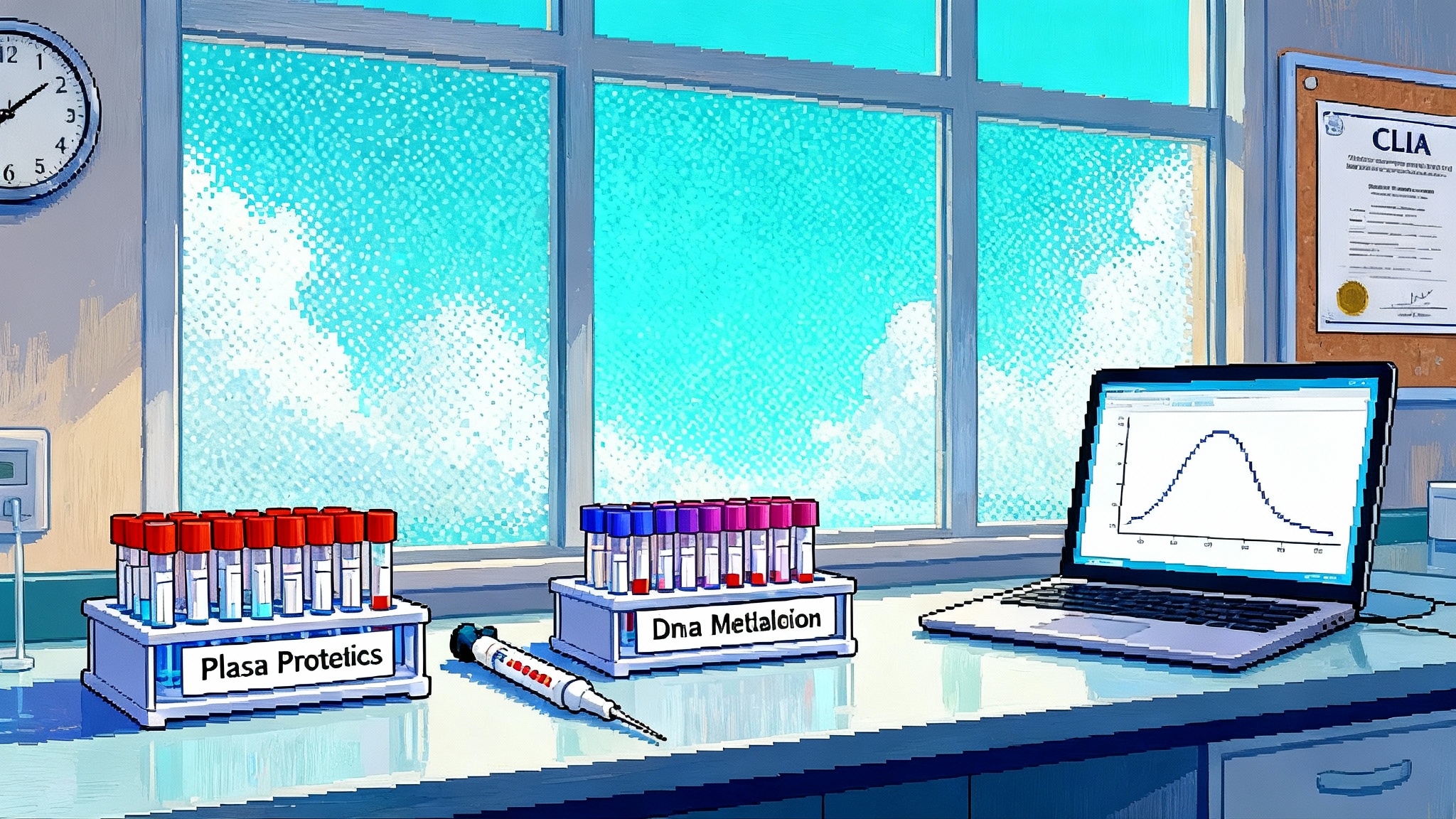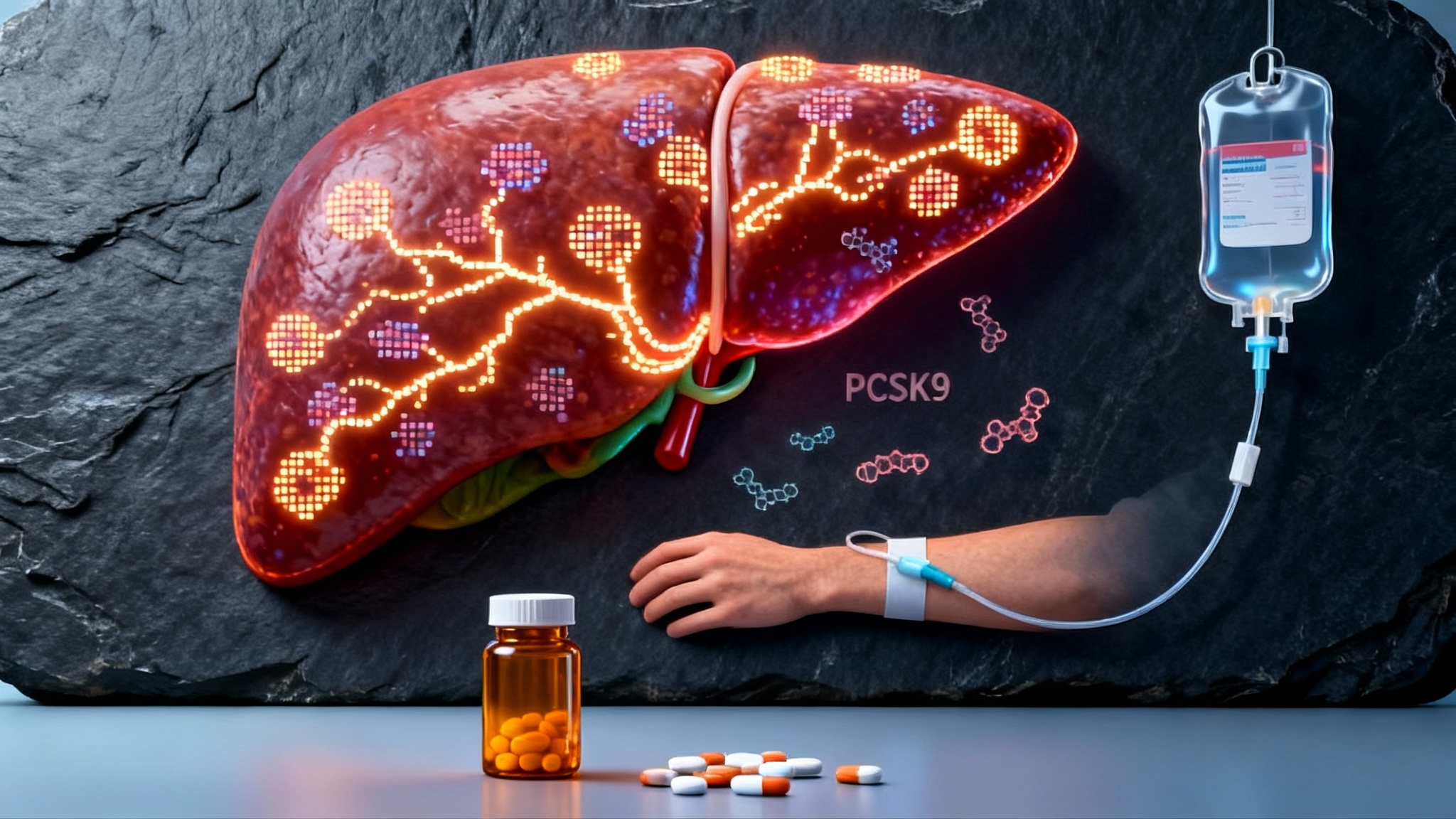GLP-1s at Scale: From Weight Loss to Longer, Stronger Lives
September 2025 delivered two signals that reset the GLP-1 narrative: Swiss Re modeled population-level mortality gains, and new oral semaglutide data showed injectable-level weight loss. Here is how to translate weight loss into real healthspan while protecting muscle and bone.

The September 2025 reset
September brought a pivot from whether GLP-1s work to how we deploy them wisely. Swiss Re modeled that broad adoption plus behavior change could lower US all-cause mortality over two decades, moving the discussion from individual outcomes to population longevity. See the projection in Swiss Re modeled mortality gains. Two days earlier, oral semaglutide added clinical momentum with once-daily dosing that delivered large, durable weight loss and tolerability comparable to injectables.
How GLP-1s touch aging biology
GLP-1 receptor agonists influence multiple levers of aging biology, not just the number on the scale.
- Energy balance and adiposity. Appetite reduction and slower gastric emptying tilt energy balance negative, lowering total and visceral fat and reducing ectopic fat in the liver, pancreas, and skeletal muscle.
- Inflammation. Shrinking fat depots reduces inflammatory signaling, with additional direct effects on immune and endothelial function.
- Vascular and metabolic risk. Lower fasting glucose and A1c, improved postprandial lipemia, and typically lower triglycerides create a less atherogenic milieu. Blood pressure and sleep apnea often improve with weight reduction.
- Kidney protection. In type 2 diabetes, GLP-1s reduce albuminuria and slow eGFR decline, a key driver of lifespan and healthspan.
- Heart failure symptoms. In obesity and diabetes, GLP-1s improve exercise tolerance and symptoms in heart failure with preserved ejection fraction.
When people describe GLP-1s as longevity drugs, they usually mean this bundle: less adiposity and ectopic fat, calmer inflammatory tone, safer atherogenic profile, and slower kidney decline.
Which endpoints really matter for healthspan
Weight is a leading indicator. The endpoints that prove healthspan are downstream.
- MACE. Major adverse cardiovascular events remain the cornerstone because cardiovascular disease is the leading midlife and late-life killer.
- Kidney outcomes. Sustained eGFR decline, progression to end-stage kidney disease, and kidney-related death are high-value endpoints that reduce downstream events and frailty.
- All-cause mortality. Hard to move in trials, but the integrated outcome that population models capture when MACE falls, kidney failure slows, and comorbidities improve.
- Function and quality of life. Weight-bearing capacity, cardiorespiratory fitness, and patient-reported function track the lived experience of healthspan.
What the new oral data add
Adherence and preference matter. Many people avoid injections, so a potent oral option lowers the barrier to entry and should increase uptake in primary care and cardiometabolic clinics. In OASIS 4, on-treatment average weight loss reached 16.6 percent at 64 weeks versus 2.7 percent with placebo, with about one third achieving at least 20 percent weight loss. See the summary in OASIS 4 oral semaglutide results. The implication for healthspan is simple: if tablets can achieve the same weight and risk-factor shifts as injectables, more people can reach thresholds that move MACE, kidney outcomes, and eventually mortality.
For practical program design, see our semaglutide weight loss guide.
Turning weight loss into biological-age gains
Weight loss is a means. Gains come from improving the tissues that drive resilience: skeletal muscle, bone, vasculature, and brain. GLP-1s do not build muscle or bone on their own, so plan to protect lean mass.
- Hit protein targets that protect muscle.
- Daily target. Aim for 1.6 to 2.2 grams of protein per kilogram of reference body weight per day. Older adults or anyone training in a deficit can favor the higher end.
- Per-meal dose. Split into 3 to 4 meals with 0.4 to 0.6 grams per kilogram per meal, using high-leucine sources.
- Food first. Use dairy, eggs, fish, lean meat, tofu, and legumes; add a whey or soy isolate shake when appetite is low. Dial in details with our protein intake for muscle.
- Make resistance training non-negotiable.
- Frequency and volume. Train 3 days per week, cover all major movement patterns, and accumulate 10 to 15 hard sets per muscle group weekly.
- Progression. Add small amounts of load or an extra rep each week. Mix heavier low-rep work with moderate-rep sets to preserve strength and hypertrophy.
- Power and function. Include low-impact power moves like medicine ball throws or sit-to-stand with light weight. Build your plan with strength training for healthspan.
- Protect bone while the scale moves.
- Loading. Lift heavy enough to challenge the hips, spine, and legs. Add brief impact if joints allow.
- Nutrition. Ensure 1,000 to 1,200 mg calcium per day and maintain vitamin D sufficiency based on labs.
- Pharmacology. High fracture risk may warrant antiresorptives or anabolics under clinical guidance.
- Consider evidence-based adjuncts.
- Creatine monohydrate. Take 3 to 5 grams daily to support training capacity and lean mass.
- Frontier combinations. Myostatin or activin-pathway agents have increased lean mass in trials but are not approved for routine weight management. Consider only in clinical studies.
- Keep cardio for the heart and mitochondria.
- Zone 2 anchor. Accumulate 120 to 180 minutes weekly at conversational intensity.
- VO2 max touches. Add one or two short interval sessions weekly to maintain aerobic ceiling.
- Engineer maintenance.
- Step down, do not step off. If therapy must stop, taper dose and rehearse maintenance behaviors first.
- Food environment rules. Precommit to protein-forward meals, fiber, and simple defaults. Practice at maintenance calories before stopping.
Risks you should plan for
- Lean mass loss and sarcopenia. Without training and adequate protein, 20 to 40 percent of weight lost can be lean.
- Bone loss. Energy deficits increase bone turnover; program strength and ensure calcium and vitamin D sufficiency.
- Gastrointestinal intolerance. Nausea and reflux are common early. Titrate slowly and favor smaller meals.
- Discontinuation rebound. Abrupt stops often lead to rapid weight and risk-factor rebound.
- Rare risks. Pancreatitis and gallbladder disease are uncommon but important. A personal or family history of medullary thyroid carcinoma or MEN2 remains a contraindication for semaglutide-class drugs.
What to track while on a GLP-1
A simple biomarker stack helps you measure healthspan progress and catch issues early.
- Every 3 to 6 months. A1c, fasting glucose, fasting insulin if available, comprehensive metabolic panel, lipid panel with ApoB, uric acid, hsCRP, and TSH as indicated.
- Kidney. eGFR and urine albumin-to-creatinine ratio, focusing on trends.
- Vitals. Home blood pressure and resting heart rate.
- Body composition. DEXA at baseline and 6 to 12 months to quantify fat, lean, and bone mineral density.
- Strength and function. Handgrip, sit-to-stand, and a simple loaded carry, reassessed monthly.
- Fitness. A submaximal treadmill or bike test to estimate VO2 max every 3 to 6 months.
- Bone turnover in high risk. Serum P1NP and CTX at baseline and again after 3 to 6 months of active weight loss.
Second-order effects for insurers and pension systems
- Mortality improvement. Falling mortality over two decades would improve claims experience for new life insurance business and alter the protective value of some underwriting tests.
- Longevity risk. Pension plans and annuity writers may face longer benefit payout periods, driving growth in longevity risk transfer.
- Morbidity and disability. Fewer MACE and slower kidney decline could reduce disability claims and healthcare costs, though access may be unequal.
- Lapse and behavior dynamics. Oral options could increase persistence and widen uptake, bringing realized benefits closer to modeled scenarios.
- Pricing and product design. Expect more wellness-linked features, lower BMI surcharges, and embedded support for resistance training or nutrition coaching.
A playbook for clinicians and patients
- Define the endpoint that matters. For a 58-year-old with prior MI, the goal is fewer events and longer life, not a BMI target. For a 45-year-old with prediabetes, the goal is normal glycemia and fitness with lean mass maintained.
- Choose the route patients will use. Tablets remove a barrier for needle-averse patients. If a weekly injection is easier, use it.
- Coach for muscle and bone from day one. Write the training and protein plan into the GLP-1 prescription and track DEXA and strength.
- Titrate slowly to tolerability. Avoid early GI events that lead to abandonment.
- Plan the maintenance phase. If cost, supply, or preference force a stop, rehearse maintenance before tapering.
- Track what matters. MACE risk factors, kidney trends, function, and fitness move the needle on healthspan.
The road ahead
GLP-1 medicines are not a magic anti-aging pill. They are a powerful metabolic lever that, paired with training and nutrition, can rewire risk at scale. September’s mortality modeling and oral data point to a future where more people access benefits that ripple through households and balance sheets. The opportunity is to convert chemical appetite control into durable biological resilience by focusing on endpoints that matter, protecting muscle and bone while the scale drops, and building maintenance plans that survive the end of the prescription.








